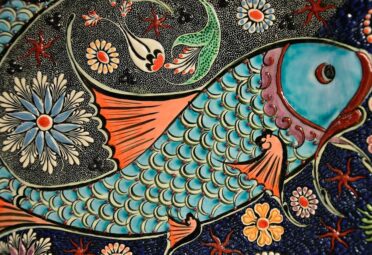Sustainable Art: How Eastside Artists Are Embracing Eco-Friendly Practices
Sustainable art, also known as eco-art, combines environmental awareness with artistic expression. This art form emphasizes the use of eco-friendly materials and techniques to minimize environmental impact while raising awareness of sustainability.
The Importance of Eco-Friendly Practices in the Arts
In an era where environmental concerns are paramount, incorporating eco-friendly practices into the arts is essential. Artists play a crucial role in reflecting social values and promoting change. By adopting sustainable practices, artists can significantly reduce carbon emissions and inspire others to think about their impact on the environment.
The Eastside art community, known for its vibrant and diverse art scene, has become a hub for sustainable art practices. This community includes both emerging and established artists dedicated to creating art that not only captivates, but also conveys a compelling environmental message.
Materials and Technique
Eastside artists are increasingly turning to recycled and repurposed materials for their creations. These materials, derived from everyday waste, give new life to discarded objects, transforming them into unique and thought-provoking works of art. This practice not only reduces waste, but also challenges traditional notions of value and beauty in art.
Eastside artists also use natural and non-toxic materials in their work. From plant-based dyes to biodegradable canvases, these materials ensure that the artistic process is safe for both the creators and the environment. This shift to natural materials marks a significant step in reducing the harmful effects of traditional art materials.
Community and Collaboration
Collaboration is a cornerstone of the Eastside sustainable art movement. Artists often join forces on projects that emphasize sustainability, pooling their resources and ideas to create impressive works. This collaboration reinforces their message and demonstrates the power of collective action in changing the environment.
The Eastside art community actively partners with local environmental organizations. These partnerships provide artists with access to resources, support, and platforms to showcase their eco-friendly art. In turn, the organizations benefit from the artists’ ability to engage the public and communicate complex environmental issues through compelling visuals.
Environmental and Social Impact
By utilizing sustainable practices, Eastside artists significantly reduce their carbon footprint. The use of recycled materials, non-toxic mediums and waste reduction techniques contribute to a more sustainable art production process, setting an example for other communities.
Art has the unique ability to convey messages in a powerful and accessible way. Eastside artists use their work to raise awareness about critical environmental issues, from climate change to pollution. Their art serves as both a call to action and a source of inspiration for sustainable living.
Several successful projects illustrate the impact of sustainable art on the Eastside. For example, a public mural made entirely from recycled materials not only beautified a public space, but also sparked conversations about waste and resource management. Another example is an art installation that used solar-powered lighting to emphasize the benefits of renewable energy.

Challenges and Future Directions
Despite their dedication, Eastside artists face a number of challenges in implementing sustainable practices. These include the higher cost of sustainable materials, the limited availability of eco-friendly art supplies, and the additional effort required to responsibly source and use these materials.
To overcome these challenges, artists rely on a combination of community support, grants, and partnerships with environmental organizations. Local governments and arts councils can also play a critical role by providing funding and resources to support sustainable art practices.
The future of sustainable art on the Eastside looks promising. Through ongoing efforts to educate and engage the community, as well as innovative approaches to art making, the Eastside is poised to become a leader in the sustainable arts movement. The goal of the project is a thriving creative community where creativity and sustainability go hand in hand, inspiring others to adopt environmentally friendly practices in all aspects of life.
Conclusion
The Eastside art community’s commitment to sustainability demonstrates how art can be a powerful means of protecting the environment. By utilizing eco-friendly practices, these artists are not only reducing their impact on the environment, but also inspiring broader social change towards a more sustainable future.


